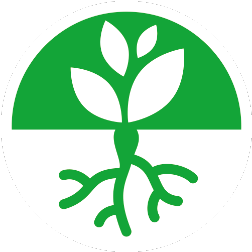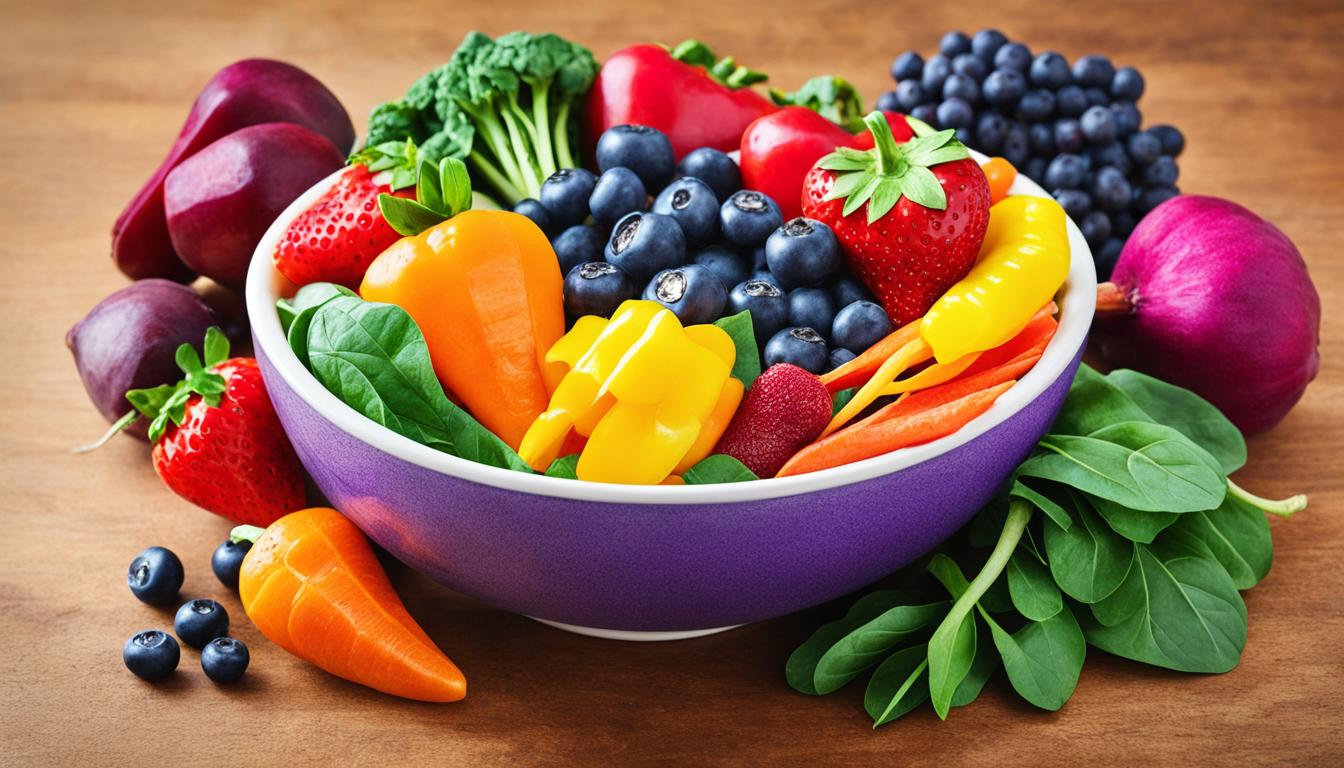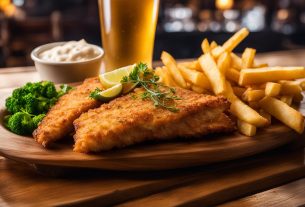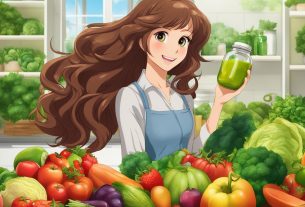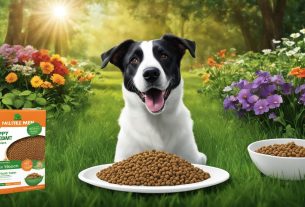Food colouring has become a common part of many people’s lives, used to enhance the visual appeal of food and drink. However, the widespread use of artificial colours has raised concerns about their safety and potential health risks. In response, many companies and individuals are turning to natural dyes as a safer and healthier alternative to traditional food colouring agents.
Natural dyes are derived from fruits, vegetables, and other plant sources, making them a more sustainable and environmentally-friendly option. Moreover, they can provide vibrant and eye-catching hues without the use of artificial colours, ensuring that the food remains both visually appealing and nutritious.
This section will explore the benefits of using natural food colouring in more detail, as well as provide practical tips for enhancing the presentation of healthier and more vibrant foods. By the end of this article, readers will have gained a greater understanding of the advantages of opting for natural dyes over artificial colours, as well as the techniques and strategies for incorporating them into their culinary creations.
Key Takeaways:
- Artificial food colorants may be harmful to health.
- Natural dyes are safer and healthier options for food coloring.
- Natural food coloring can enhance the vibrancy and visual appeal of food
- Natural food coloring contributes to a more sustainable and environmentally-friendly food industry.
- Practical tips for using natural food colorants in baking and other culinary applications can help enhance the presentation of food.
Understanding Food Colouring Options
Food coloring is a common ingredient in many baked goods, desserts, and other food products. There are two primary types of food coloring: artificial colours and natural dyes. While artificial colors have long been popular in the food industry for their bright hues and stability, there is growing concern about their safety and potential health risks. On the other hand, natural dyes use ingredients such as fruits, vegetables, and other plant-based sources for color and are generally considered a healthier option.
Artificial colours are made from a combination of chemicals, and while they are commonly used in many processed foods today, there are increasing concerns about their safety. These food additives are not found naturally in foods and have been linked to various health issues, including hyperactivity, allergic reactions, and even cancer in some studies. The use of artificial colors in some parts of the food industry is heavily regulated by the European Union and the UK authorities and must meet specific strict requirements.
Natural dyes, on the other hand, use ingredients derived from natural sources, such as beetroot, blueberries, or turmeric, to add color to foods. These dyes do not typically involve any chemical modification or synthesis and contain natural compounds that provide vibrant hues to various foods. As opposed to artificial colors, natural dyes like Food Lab are often rich in nutrients and may provide health benefits beyond their color. For example, beetroot powder has been found to be a good source of dietary nitrate, a compound that can lower blood pressure and boost exercise performance.
When it comes to choosing food coloring agents, it’s essential to opt for food-safe colorants. Such colorants do not contain any unsafe additives or chemicals that could harm people’s health. Many natural dyes can be used for this purpose, particularly for baking colors. Consumers should pay attention to the quality and purity of the dyes they use in their foods/recipes to ensure their reliability. Moreover, food industry companies should monitor and regulate the use of food coloring in their products to avoid any adverse impacts on customers’ health.
Below is a table highlighting key differences between food colorings’ artificial colors and natural dyes.
Pros and Cons
- Artificial Colours
Pros
- Bright colours
- Long shelf-life
- Affordable
Cons
- Health risks
- Not natural
- Some are not approved for food use in certain countries
- Natural Dyes
Pros
- Natural ingredients
- Safe to consume
- May contain nutrients and other health benefits
Cons
- Less bright colors than artificial colors
- May have shorter shelf-life and stability in some cases
- Can be more expensive.
Benefits of Natural Food Colouring
When it comes to enhancing the colour of food, natural food colouring is a healthier and more wholesome alternative to artificial colours and food additives. Natural dyes derived from fruits, vegetables, and other plant sources can provide vibrant hues to food without the use of synthetic chemicals.
Using natural food colouring contributes to a healthier eating experience for consumers, as it eliminates the risks associated with artificial colours and other food industry coloring agents. Moreover, natural food colouring is more environmentally sustainable, as it requires fewer resources and generates less waste than food coloring made with synthetic ingredients.
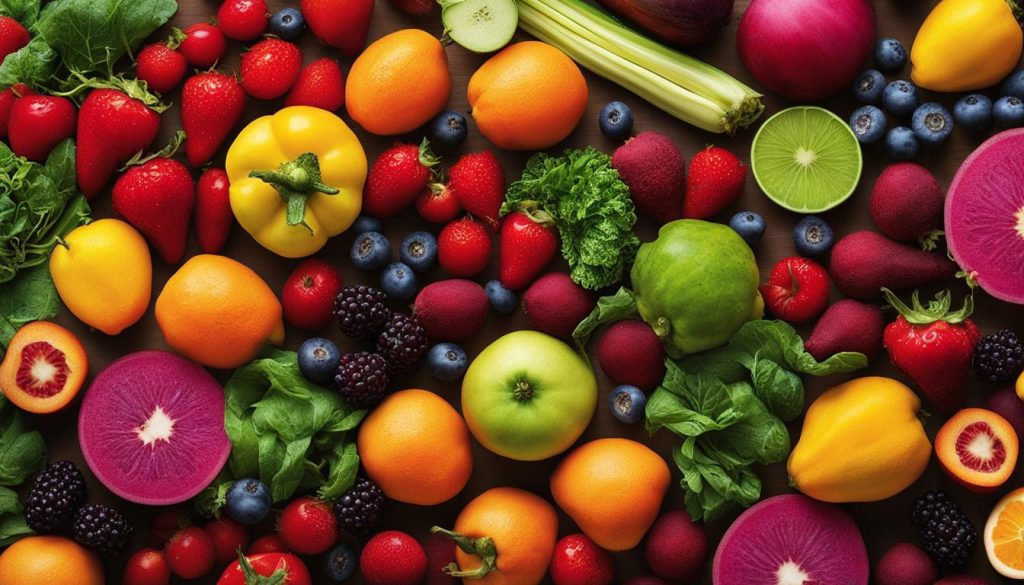
In baking, natural food colouring helps maintain the nutritional value and taste of the food, making it an ideal choice for those who are health-conscious. With natural baking colors, you can create stunning cakes, cupcakes, and other desserts that look as good as they taste.
Tips for Vibrant and Healthier Food Presentation
Using food colouring is an excellent way to enhance the look of food, making it more tempting and vibrant. Here are some practical tips and techniques for incorporating natural dyes into recipes:
Marbling Technique
The marbling technique involves swirling different shades of natural dyes into a mixture to create a beautiful, unique pattern. To achieve this effect, create a mixture of natural food colouring and drop it onto the mixture. Use a toothpick to create a marbled effect, then bake as usual. The result is a striking, marbled look that adds depth and character to any dish.
Layering Technique
The layering technique involves adding several layers of natural dyes to create a colourful display in baked goods such as cakes. To achieve this effect, divide your batter into several small portions and add a different natural dye to each. Pour the mixtures on top of one another and bake as usual. Serve the finished product and enjoy beautiful, vibrant layers.
Creating Intricate Designs
Creating intricate designs with food colouring requires patience and skill, but the stunning result is well worth the effort. Use natural dyes to create intricate designs on cookies and cakes with a piping bag, or use stencils and a paintbrush for more precision. Allow the designs to dry, then bake or serve immediately.
Remember to use natural food colouring to achieve these techniques. Using natural dyes ensures a natural, healthier, and more nutritional option for you and your guests.
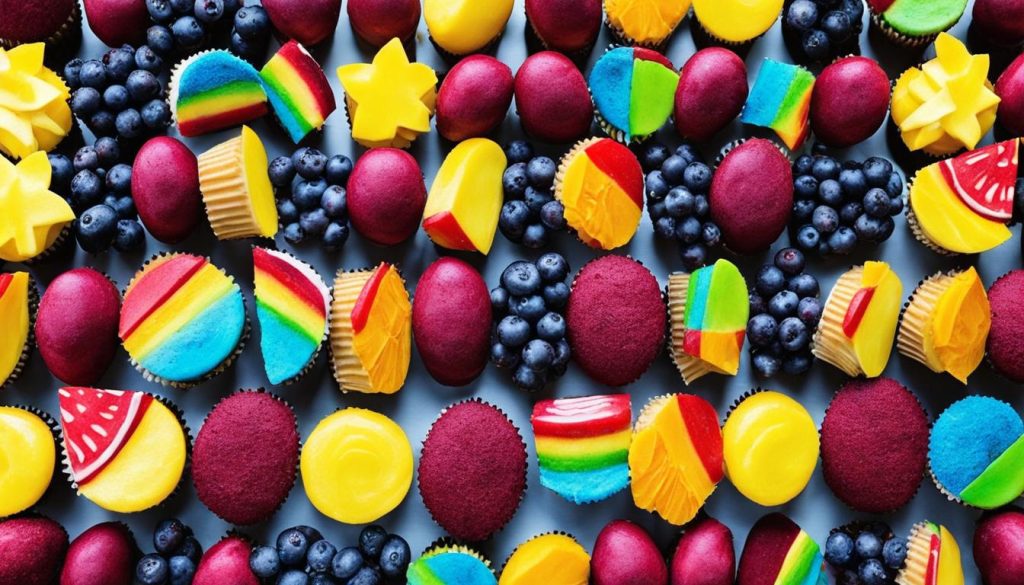
Conclusion
Opting for natural food colouring has numerous benefits, from creating more vibrant and appealing foods to promoting a healthier eating experience. By using food-safe colorants derived from fruits and vegetables, the artificial colours and additives found in many food industry coloring options can be avoided.
Remember to keep these tips in mind for achieving successful results with natural food colouring: experiment with different natural dyes, such as turmeric or beetroot, for vibrant hues; use marbling, layering and intricate designs to enhance presentation; and be mindful of the nutritional value and taste of the food you are colouring.
Next time you are preparing a meal or dessert, consider incorporating natural food colouring for a healthier and more vibrant experience!
FAQ
What are the benefits of using natural food colouring?
Natural food colouring provides vibrant hues without the use of artificial colours. It is derived from fruits, vegetables, and other plant sources, making it a healthier and more wholesome option compared to artificial colours. Natural dyes also contribute to the overall aesthetic appeal of food while maintaining its nutritional value and taste.
Are artificial colours safe to consume?
Artificial colours are extensively tested and regulated by food safety authorities, such as the US Food and Drug Administration (FDA) and the European Food Safety Authority (EFSA). However, some studies suggest a potential link between certain artificial colours and hyperactivity in children. It is important to read food labels and make informed choices when consuming products that contain artificial colours.
What are some natural sources for food dyes?
Natural food dyes can be obtained from various sources, including fruits such as berries, beets, and turmeric, vegetables like spinach and red cabbage, and spices such as saffron and paprika. These ingredients can be used to create a wide range of vibrant colours in food without the need for artificial additives.
How can I use natural food colouring to enhance the presentation of my dishes?
There are several techniques you can use to incorporate natural food colouring into your recipes. For instance, you can create marbling effects by gently swirling different colours together, layer different coloured batters to achieve vibrant stripes, or use piping bags to create intricate designs. The key is to experiment and have fun while maintaining the taste and nutritional value of your dishes.
Are baking and food coloring agents the same?
Baking colors are essentially food coloring agents specifically formulated for use in baking. These agents are designed to withstand high temperatures and retain their vibrant colours during the baking process. They are safe to use and widely available in stores, offering a convenient way to add vibrant hues and visual appeal to your baked goods.
What should I consider when choosing food-safe colorants?
When choosing food-safe colorants, it is essential to look for products that are specifically labeled as food-grade or edible. These colorants are tested and approved for consumption. Additionally, read the ingredient list to ensure there are no potential allergens or harmful additives present. If you have any specific dietary concerns or restrictions, consult with a healthcare professional or nutritionist.
